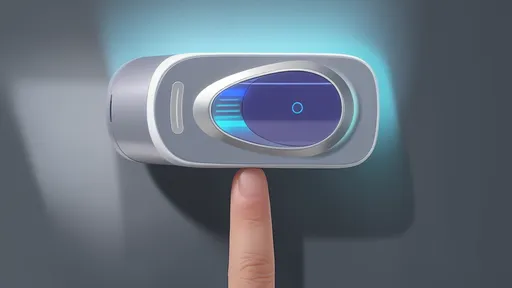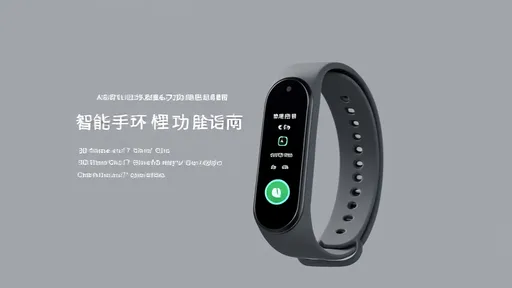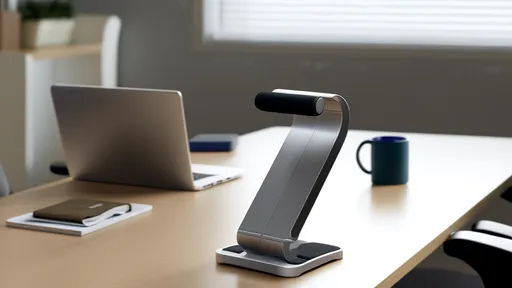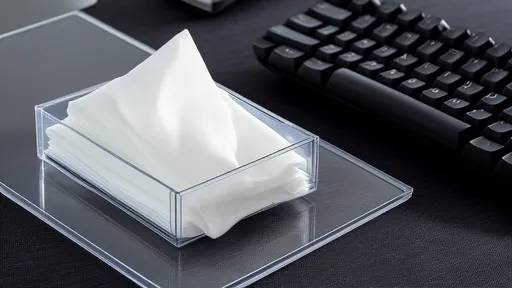The pharmaceutical industry has undergone significant transformations in recent years, with one of the most notable advancements being the implementation of drug traceability systems. These systems, often centered around unique identification codes known as drug traceability codes, have become a cornerstone in ensuring the safety, authenticity, and transparency of pharmaceutical products. The ability to track a drug's journey from manufacturing to consumption has not only bolstered consumer confidence but also streamlined regulatory compliance and supply chain management.
Understanding Drug Traceability Codes
At the heart of this system lies the drug traceability code, a unique identifier assigned to each pharmaceutical product. This code serves as a digital fingerprint, containing critical information about the drug's origin, batch number, expiration date, and distribution path. Unlike traditional serial numbers, these codes are designed to be interoperable across different systems and regions, making them a universal tool for tracking and verification.
The implementation of these codes varies by country, with some nations mandating their use for all prescription medications while others apply them selectively to high-risk or high-value drugs. In the United States, for instance, the Drug Supply Chain Security Act (DSCSA) has established a comprehensive framework for electronic, interoperable traceability at the package level by 2023. Similarly, the European Union's Falsified Medicines Directive requires unique identifiers on prescription medicines to combat counterfeit drugs.
The Query Process: From Code to Information
Querying a drug traceability code is a process that has become increasingly accessible to various stakeholders in the pharmaceutical ecosystem. Manufacturers typically encode the information in both human-readable text and machine-readable formats such as 2D barcodes or QR codes. This dual approach ensures compatibility with both sophisticated scanning systems and simple smartphone applications.
When a consumer or healthcare professional scans a drug's traceability code, the query is routed through a network of verification systems. These systems might include manufacturer databases, third-party verification services, or government-operated portals. The speed and accuracy of this process have improved dramatically with cloud-based solutions and blockchain technology, with some systems delivering verification results in near real-time.
For pharmaceutical companies, the traceability code query process serves multiple purposes beyond simple verification. It provides valuable data about product movement, helps identify potential supply chain inefficiencies, and offers insights into market penetration and product performance. This data-driven approach has revolutionized inventory management and demand forecasting in the industry.
Technological Foundations of Traceability Systems
The effectiveness of drug traceability systems relies on a sophisticated technological infrastructure. At the most basic level, encoding standards such as GS1 provide the framework for creating unique, standardized identifiers. These standards ensure that codes generated in one country can be recognized and processed in another, facilitating global trade while maintaining security.
Advanced systems incorporate elements of distributed ledger technology to create immutable records of a drug's journey through the supply chain. This approach significantly reduces the risk of data tampering and provides a transparent audit trail. Some implementations use hybrid systems that combine centralized databases for speed with blockchain elements for critical verification points.
The integration of Internet of Things (IoT) devices has further enhanced traceability capabilities. Smart packaging with embedded sensors can now provide not just identification data but also environmental conditions during transit, such as temperature and humidity levels. This is particularly valuable for temperature-sensitive medications where storage conditions directly impact efficacy.
Global Perspectives and Implementation Challenges
While the concept of drug traceability enjoys widespread support, its implementation varies significantly across different markets. Developed nations with robust digital infrastructure have been able to roll out comprehensive systems relatively quickly. In contrast, developing countries often face challenges related to technology access, internet connectivity, and regulatory harmonization.
In China, for example, the drug traceability system has been implemented as part of a broader digital health strategy. The system integrates with national healthcare databases and e-commerce platforms, creating a seamless experience for consumers and regulators alike. India's track-and-trace system, while impressive in scale, has faced challenges related to the diversity of its pharmaceutical market and the prevalence of informal distribution channels.
International organizations such as the World Health Organization have been working to establish guidelines for global traceability standards. These efforts aim to create a framework that accommodates different levels of technological development while ensuring consistent patient safety standards worldwide. The harmonization of these systems remains an ongoing challenge but also presents opportunities for international collaboration in pharmaceutical regulation.
The Future of Drug Traceability
As technology continues to evolve, so too will drug traceability systems. Emerging technologies like artificial intelligence are being integrated into traceability platforms to predict potential supply chain disruptions or identify patterns that might indicate counterfeit activity. The combination of traceability data with other healthcare information systems promises to create more comprehensive patient safety networks.
The next generation of traceability systems may move beyond simple identification to include more detailed product information, such as manufacturing parameters or clinical trial data. This expanded scope could transform traceability codes into comprehensive digital product passports, providing stakeholders with unprecedented access to a drug's complete history and characteristics.
Consumer expectations are also shaping the evolution of these systems. As patients become more engaged in their healthcare decisions, demand grows for transparent access to medication information. Future traceability systems will likely incorporate more patient-friendly interfaces and educational resources, bridging the gap between technical traceability data and meaningful consumer information.
The journey from a simple serial number to sophisticated traceability ecosystems represents one of the most significant advancements in pharmaceutical safety. As these systems mature and become more interconnected globally, they promise to create a new standard for drug safety, supply chain efficiency, and consumer empowerment in the healthcare sector.
Pulse oximeters have become indispensable tools in modern healthcare, particularly in monitoring oxygen saturation levels non-invasively. However, one common challenge users face is nail interference, which can skew readings and lead to inaccurate results. Understanding how to mitigate this issue is crucial for both medical professionals and individuals relying on these devices for health monitoring.
The pharmaceutical industry has undergone significant transformations in recent years, with one of the most notable advancements being the implementation of drug traceability systems. These systems, often centered around unique identification codes known as drug traceability codes, have become a cornerstone in ensuring the safety, authenticity, and transparency of pharmaceutical products. The ability to track a drug's journey from manufacturing to consumption has not only bolstered consumer confidence but also streamlined regulatory compliance and supply chain management.
The rise of digital healthcare credentials has brought unprecedented convenience to patients worldwide, but it has also opened new avenues for fraudsters. Electronic medical insurance certificates, designed to streamline access to healthcare services, have become a prime target for sophisticated cybercriminals. This phenomenon isn't isolated to any particular region—from Beijing to Boston, healthcare systems are witnessing an alarming increase in digital credential theft.
The rise of telemedicine has transformed how patients access healthcare, with online consultations becoming increasingly common. One critical aspect of virtual visits that often goes overlooked is the quality of medical photos patients submit. Clear, well-composed images can make the difference between an accurate remote diagnosis and unnecessary follow-up appointments. As patients take more responsibility for documenting their health concerns through photography, mastering a few fundamental techniques becomes essential.
The growing reliance on health apps has brought privacy and security concerns to the forefront. As these applications collect sensitive data—ranging from heart rate and sleep patterns to medical history and GPS locations—users and regulators alike are questioning how this information is managed. The permissions granted to health apps often determine the extent of data access, making it crucial to establish robust strategies for permission management.
In today’s fast-paced world, many of us find ourselves glued to our desks for hours on end, often losing track of time until stiffness or discomfort sets in. Sedentary behavior has become a silent health hazard, linked to a range of issues from poor posture to increased risk of chronic diseases. Fortunately, wearable technology like fitness bands has stepped in to combat this modern-day problem. One of the most valuable features these devices offer is the sedentary reminder—a gentle nudge to get up and move. But simply enabling the feature isn’t enough; understanding how to optimize its settings can make the difference between a helpful tool and an ignored alert.
The modern pace of life has made fast food an unavoidable part of our dietary landscape. While nutritionists consistently warn about the health consequences of regular fast food consumption, the reality is that most people will find themselves eating these convenient meals more often than they'd like to admit. Rather than moralizing about avoidance, a more practical approach focuses on mitigation - how to nutritionally rescue your body after fast food consumption.
In our screen-dominated world, eye fatigue has become an epidemic. The constant glare from digital devices leaves millions rubbing their temples and squinting through blurred vision. While artificial tears and blue light glasses offer temporary relief, traditional Chinese medicine presents an intriguing alternative – acupressure for eye strain. This ancient healing art teaches that strategic finger pressure along meridian pathways can dissolve tension, improve circulation, and restore visual clarity without medications.
Air-conditioned rooms provide comfort during hot weather, but they often come with an unintended side effect: dry nasal passages. The constant circulation of cooled air tends to strip moisture from the environment, leaving many people struggling with irritation, congestion, or even nosebleeds. Understanding how to maintain nasal hydration in such conditions is essential for both comfort and health.
For those who spend long hours sitting at a desk or in front of a computer, the struggle with stiff calves and poor circulation is all too real. The modern sedentary lifestyle has given rise to a generation of "desk-bound professionals" who often neglect the importance of movement. Enter the calf massage roller—a simple yet effective tool designed to alleviate tension, improve blood flow, and restore mobility to overworked lower legs.
In today's fast-paced corporate environment, telephone conferences have become an indispensable part of daily work routines. However, the prolonged hours spent hunched over phones or laptops during these virtual meetings have given rise to a silent epidemic: chronic neck and shoulder pain. As awareness grows about the physical toll of our digital work habits, a new category of ergonomic solutions has emerged – the telephone conference neck support brace.
Business travel often comes with its own set of challenges, and one of the most overlooked yet critical aspects is the quality of sleep. Hotels, aware of this, have started paying closer attention to their pillow offerings. The way hotels handle pillows can significantly impact a guest's experience, and many are now adopting innovative approaches to ensure comfort and hygiene.
Afternoon tea is a beloved ritual for many, offering a moment of respite in the midst of a busy day. However, traditional afternoon tea spreads often lean heavily on sugary treats, refined carbohydrates, and calorie-laden snacks. For those seeking a healthier approach without sacrificing flavor or satisfaction, there are plenty of nutritious alternatives that can transform this daily indulgence into a nourishing experience.
The modern workplace can be a breeding ground for stress, and often, the state of our physical surroundings mirrors our mental clutter. Nowhere is this more evident than in the humble desk drawer—a microcosm of chaos for many professionals. The concept of drawer decompression organizing isn’t just about tidying up; it’s a tactile form of self-care that bridges the gap between productivity and mental well-being.
In today’s fast-paced digital world, keyboards have become an essential part of our daily lives. Whether at work, school, or home, we rely on them for communication, productivity, and entertainment. However, what many people overlook is the fact that keyboards can harbor a surprising amount of germs and bacteria. Studies have shown that keyboards can be dirtier than toilet seats, making regular cleaning a necessity. One effective and convenient solution for maintaining keyboard hygiene is the use of disinfecting wipes. These wipes are specially designed to clean and sanitize surfaces without causing damage, making them ideal for electronic devices.














